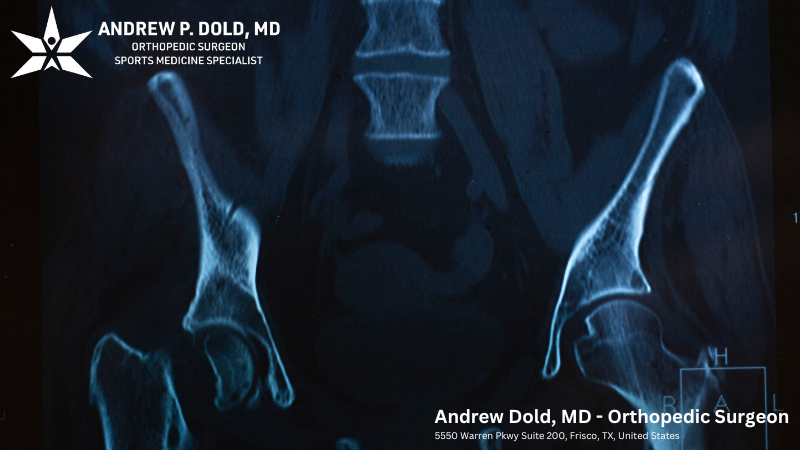Hip fractures are a common injury, especially among older adults, and can significantly impact mobility and quality of life. Understanding the causes, treatments, and recovery process associated with hip fractures is essential for both patients and caregivers. In this comprehensive guide, we’ll explore everything you need to know about hip fractures, from their causes and risk factors to surgical and non-surgical treatment options, as well as rehabilitation strategies for a successful recovery.

Hip Fractures Frisco
The Foundation of Mobility: An Overview of Hip Anatomy
Before delving into hip fractures, it’s important to understand the anatomy of the hip joint. The hip is a ball-and-socket joint comprised of the femur (thigh bone) and the acetabulum (socket) of the pelvis. Ligaments and muscles surround the joint, providing stability and facilitating movement. Understanding hip anatomy helps in comprehending how fractures occur and the implications for treatment.
Unraveling the Factors Behind Hip Fractures: Causes and Risk Factors
Hip fractures often occur due to falls, particularly among older adults with weakened bones. Other causes include trauma from accidents or sports injuries and underlying medical conditions such as osteoporosis, which weakens bones over time. Certain risk factors, including age, gender, bone density, and medication use, can increase the likelihood of experiencing a hip fracture. Recognizing these factors is crucial for prevention and early intervention.
Breaking Down the Varieties: Different Types of Hip Fractures
Hip fractures can occur in various locations within the hip joint, leading to different types of fractures. The most common types include femoral neck fractures, intertrochanteric fractures, and subtrochanteric fractures. Each type has its own characteristics and may require different treatment approaches. Understanding the specific type of hip fracture is essential for determining the most appropriate course of action.
Shedding Light on Hip Health: Diagnostic Procedures for Hip Fractures
Prompt and accurate diagnosis of hip fractures is crucial for initiating timely treatment. Healthcare providers may use a combination of physical examinations, imaging tests such as X-rays, CT scans, or MRI scans, and bone density tests to evaluate the extent and location of the fracture. These diagnostic procedures help guide treatment decisions and ensure optimal outcomes for patients.
Restoring Mobility: Surgical and Non-Surgical Treatments for Hip Fractures
The treatment approach for hip fractures depends on various factors, including the type and severity of the fracture, the patient’s overall health, and their functional status. Surgical options may include hip pinning, hip replacement (arthroplasty), or fracture fixation with plates and screws. Non-surgical treatments such as traction or bed rest may be suitable for certain patients, particularly those with less severe fractures or underlying health concerns.
Getting Back on Your Feet: Rehabilitation After Hip Fracture Treatment
Rehabilitation plays a vital role in the recovery process following hip fracture treatment. Physical therapy, exercises, and mobility aids are essential for restoring strength, flexibility, and balance. The goal of rehabilitation is to help patients regain independence in daily activities and prevent future falls or fractures. Adhering to a structured rehabilitation program is crucial for achieving optimal outcomes and maximizing long-term hip function.
Hip fractures can have significant implications for mobility and quality of life, but with prompt diagnosis, appropriate treatment, and dedicated rehabilitation, patients can achieve successful outcomes and regain independence. By understanding the causes, types, and treatment options for hip fractures, individuals can take proactive steps to prevent injuries and maintain hip health throughout their lives. Book your appointment today!


